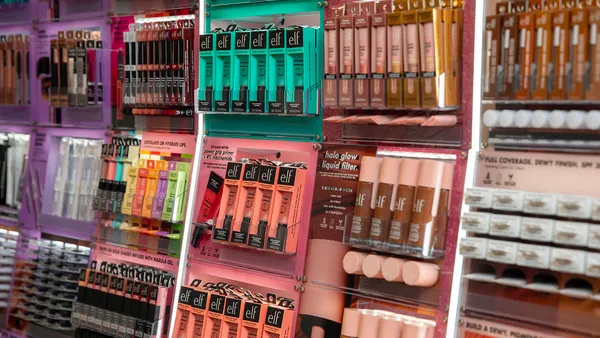Brief:
- Advertising revenue growth rate among key social and messaging companies dropped in Q1 this year to an annual rate of 26.2%, compared to 52% in Q1 2018 as user growth stalled in key regions like North America and Europe, per a study that researcher WARC shared with Mobile Marketer. While the growth rate was slower, ad revenue reached $17.9 billion in Q1, the second highest on record for Facebook, Pinterest, Snap, Twitter, Tencent and Weibo.
- Slowing ad growth has made e-commerce a bigger priority for Western social media companies, while the ease of mobile payment has made social shopping a norm in China, the study found. Facebook's announcements around a new "Libra" cryptocurrency that can be used for transactions in Messenger and WhatsApp is indicative of how social media companies are prioritizing e-commerce growth, WARC said.
- Consumer distrust of social media companies — and the broader tech industry, in general — has become a more significant issue with 50% of survey respondents saying those companies have too much power. Seventy percent of U.S. consumers don't trust information from social media sites, while just 42% said they trust influencers' opinions on products and services, per WARC.
Insight:
Social media companies have been a significant catalyst in the multiyear shift of ad spending toward newer digital media, but their growth rate will continue to slow as they mature and reach the limits of the global $616 billion advertising market, which typically expands or contracts with the broader economy. In regions like North America, the biggest market for social advertising at about $8 billion in Q1, user growth has stalled for social media giants, and time using the platforms has stagnated at about two hours a day for the past three years, according to data cited by WARC.
Asia is the biggest growth region for social media companies, particularly India, Indonesia and the Philippines. Daily social time in the region has edged upward to two hours and 11 minutes a day from two hours and nine minutes in the prior year, but monetization rates are lower than in the West, WARC found.
Social advertising's slowing growth rate, which may decelerate even further amid signs of a pending recession, is driving some Western social media companies to seek new revenue streams from mobile commerce. It's a strategy that's worked well for Chinese social media companies like Tencent and Weibo that have benefited from consumer adoption of mobile payments. Tencent, which runs WeChat, made $3.2 billion from fintech in Q1, per data cited by WARC. Facebook, Instagram, Pinterest and Snap have expanded their support for online shopping to tap into this consumer interest in mobile commerce.
The biggest hurdle to social shopping among U.S. consumers is the lack of trust in social media companies. As Facebook prepares to start a cryptocurrency that consumers can use for transactions in its messaging apps, the social network will have to overcome past data-sharing scandals to gain acceptance, per WARC. As many as three-quarters of consumers limit their online footprint, with perceived misuse of personal data as the biggest cause of distrust in social platforms, per a YouGov study cited by WARC.













